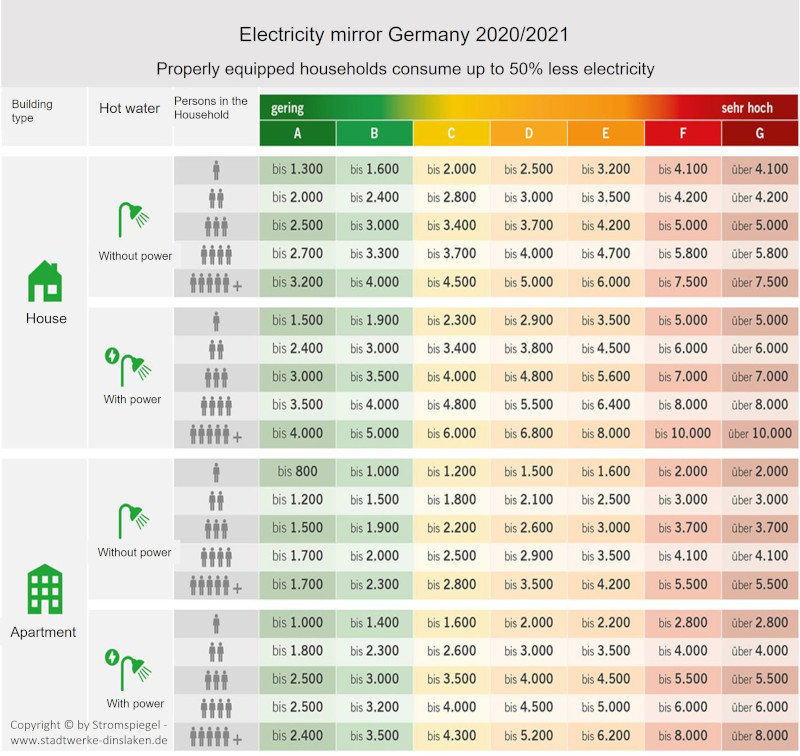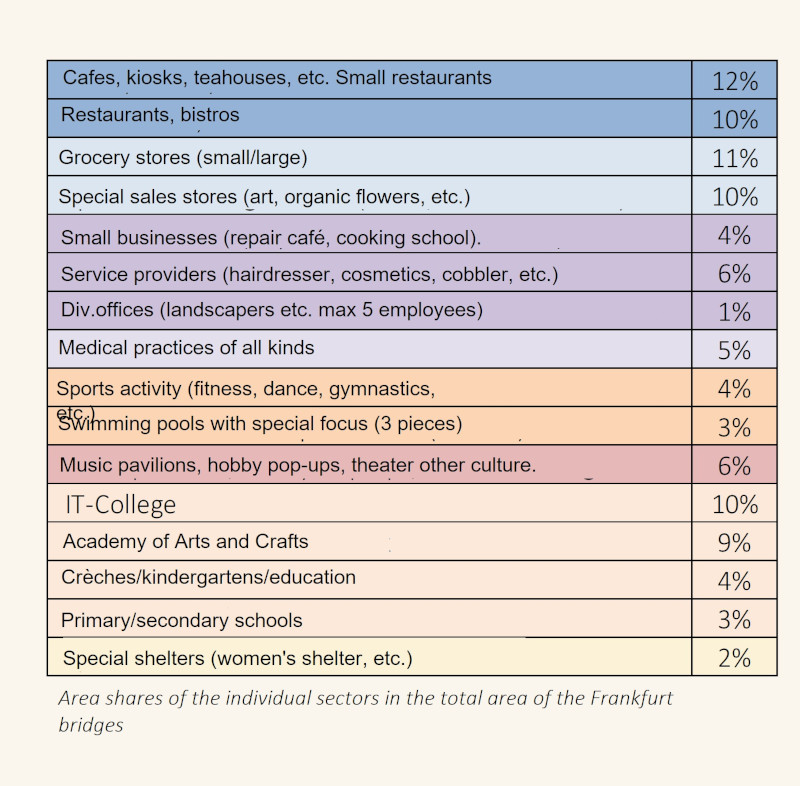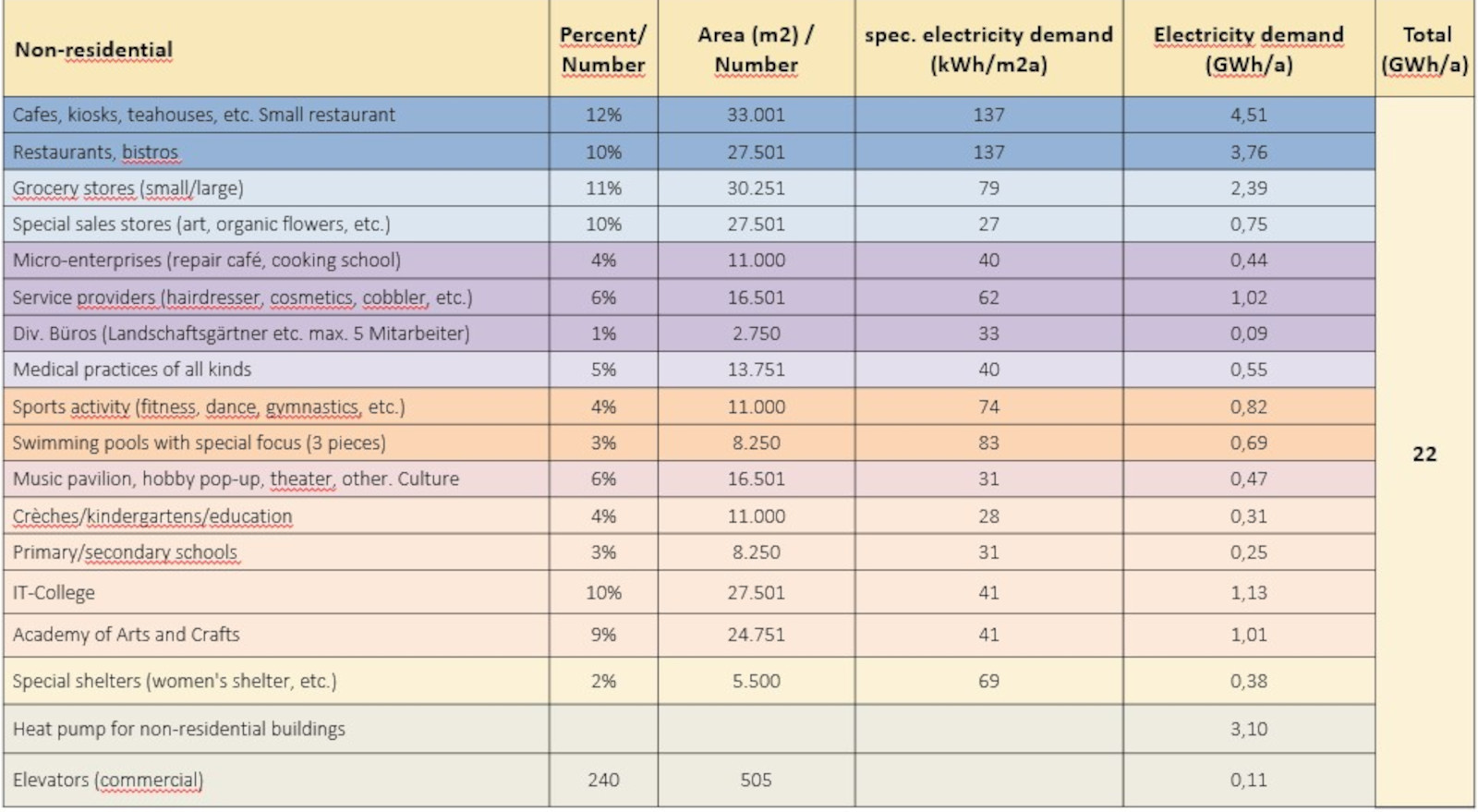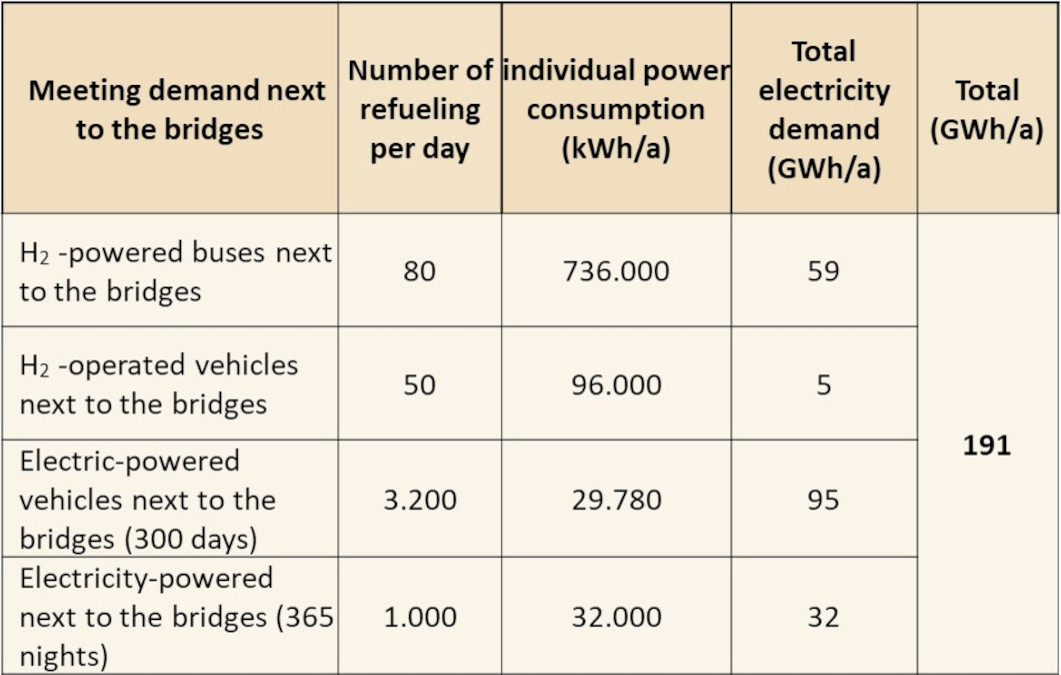Content: Composition of the electricity demand on the Frankfurt bridges
The 35,000 Bridge residents consume about 1,500 KWh/a per capita in their households -including heat pumps for space heating and cooling- or a total of about 53 GWh per year, because only the most modern technology and extremely energy-saving appliances are installed in Bridge homes.
A total of 22 GWh/a is required for 275,000 m2 of non-residential building space, and restaurants, sports facilities, educational institutions, and more must also be equipped with energy-saving devices and also sensor technology from the start, so that everything is controlled on a demand basis and only comes on when it is used.
With 14 hours of travel time per day all year round, the 400 bridge vehicles consume 58 GWh/a of drive energy (plus around 2 GWh for control technology). The comparatively low power consumption of approx. 85 kWh/100 km for electric-powered vehicles and approx. 230 kWh/100 km for H2 -powered vehicles is due to the lightweight construction of the bridge vehicles and the smooth operation of the autonomous traffic.











